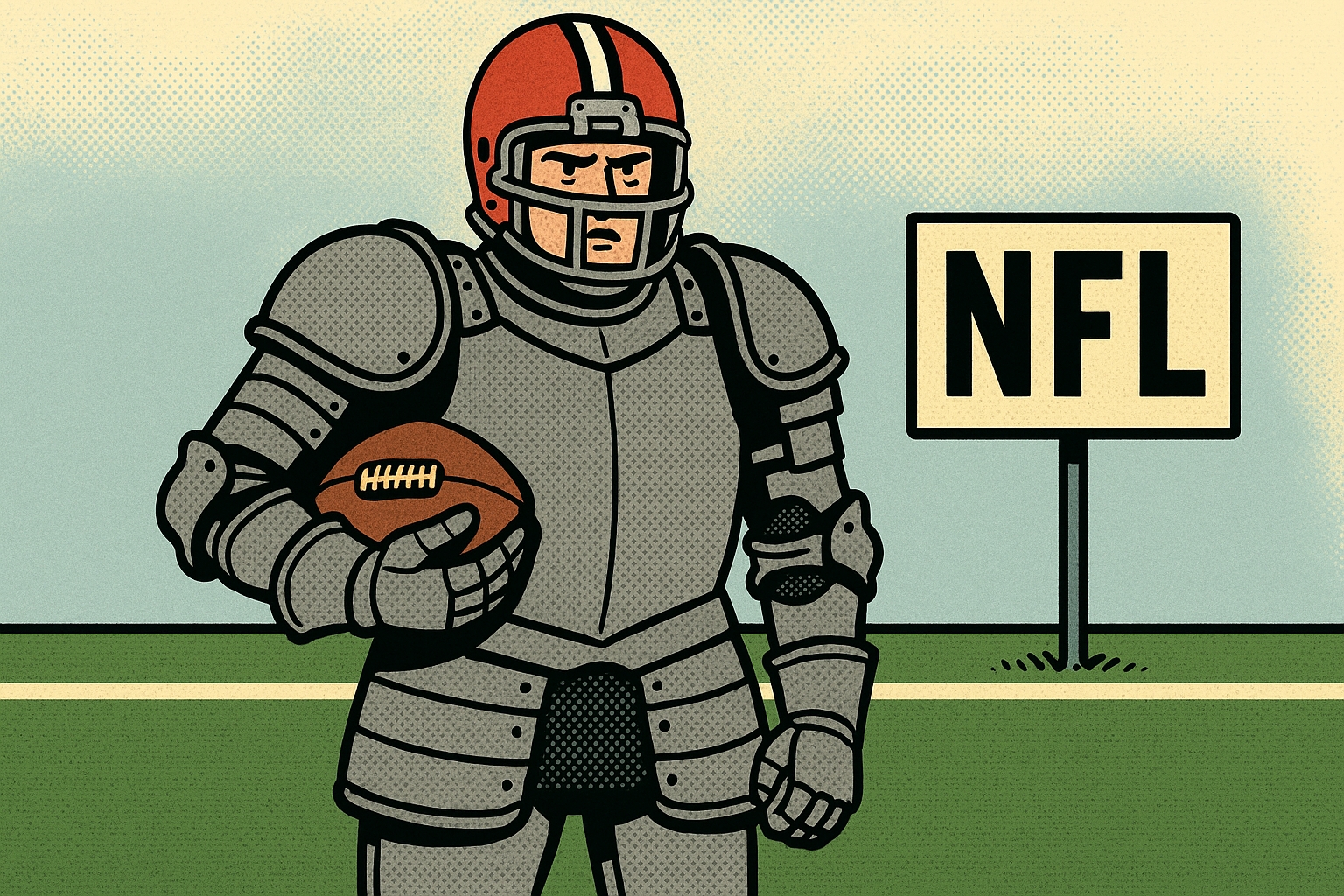New York, NY – In a sweeping safety overhaul, the National Football League announced Monday its decision to require all players to wear full body armor during competition, following what officials called a “landmark realization” that football may in fact involve physical contact.
Commissioner Roger Goodell, flanked by members of the NFL Safety Task Force and representatives from the International Brotherhood of Athletic Armorers, revealed the change during a subdued press conference. “Our comprehensive study has confirmed that during the course of a typical football match, participants not only run but, quite often, collide,” said Goodell. “It is now clear these collisions can involve considerable force. We’re taking immediate, science-based action.”
Research conducted by the NFL’s Committee to Re-Evaluate the Nature of Football identified over 700 separate instances per game in which one player’s trajectory intersects with another’s physical mass “at non-negligible speeds.” Dr. Theodore Lint, head of the committee, asserted the findings were conclusive. “We simply had no idea,” said Lint. “For years, we categorized such impacts as happenstance, or poetic choreography. But the data points to an unmistakable pattern: players keep running into one another, repeatedly, as a core feature of the sport.”
The league’s response has been both swift and comprehensive. Starting next season, every NFL athlete will don 52 kilograms of titanium-polymer exoskeleton sourced from decommissioned military vehicles and unused parade floats. According to manufacturer Atlas Defensive Solutions, the suits prevent “over 90 percent of known injuries, except narrow bone fractures and spontaneous emotional distress.” Each suit is powered by a rechargeable external battery pack and fitted with air conditioning vents, a retractable face shield, and an emergency hydration port. All existing uniforms have been retrofitted to fit over the armor, although early prototypes suggest players’ range of motion is “markedly diminished,” reducing sprint speeds to an average of 2.3 miles per hour.
Concerns have emerged from various corners over unintended side effects. Medical staff have noted a rise in cases of “suit immobilization syndrome,” where athletes become temporarily unable to stand after being knocked over, resulting in what one team doctor described as “several dozen NFL-sanctioned tortoise impressions” per game. The NFL has responded by introducing a mid-game ‘uprighting intermission’ and has contracted the International Association for Heavy Machinery to provide forklifts for player turnover. “It’s vital we prioritize safety over spectacle,” said Assistant Commissioner Ramona Vale, while observing the Cincinnati Bengals’ offense being manually propped up by a half dozen equipment officials.
Team owners remain uniformly supportive. “Football is about adaptation,” said Patriots CEO Ethan Drupke, “and we look forward to whatever next year’s regulations require, whether it’s armored vehicles or just a series of strongly worded letters between opponents.”
As the NFL embarks on this new era, league officials promise that all the “essential elements” of football will remain unchanged, except for most of the rules, equipment, and the nature of human movement. The response from fans has been muted, with crowds reportedly “unsure if the match has started or ended.” Attendance remains steady, as few spectators have noticed the difference.

Leave a Reply